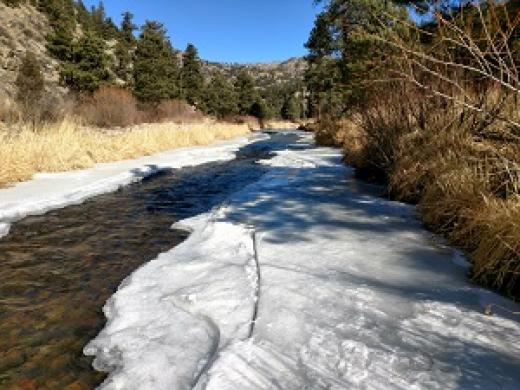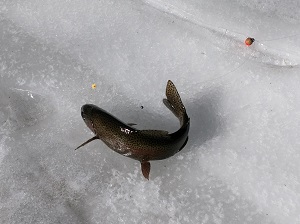The Fish are There. But…
Our “Ice Out” events are a way to get us thinking about spring—but the Big Thompson isn’t quite there yet. Challenged by some friends to fish in every month, I put fleece pants under my waders and chains on my boots and hit the Big T in the miles below Estes Park on the last day of January. Boot chains or Yak-Tracs are essential on the icy banks, because a slip can result in a nasty fall and perhaps even a swim in frigid water.
The open water you see from the highway is deceptive. What is open tends to be shallow and fast running, whereas the fish tend to hold in the slower, deeper runs. This water at Caddis Flats (photo above) looks nice, but holds no fish to speak of. So keep moving and looking. There’s fishable water to be found, and as the weather starts to warm, there will be more.
For example, that’s one of my favorite summer holes just behind me.
A key to early season fishing on the Big T is midges. We’re still two or three months away from the spring hatch, but a black or red midge pupae in size 20 or 22 will get the attention of a few—if you can get it to them. I fish the pupae as the bottom fly of a two-fly nymph rig below an egg pattern with good results when the river opens up a bit in March and April. On the last day of January, it fooled exactly two fish in two hours. One took the whole rig on the hook set, but the other ended up on the ice shelf that passed for a bank.
Ever notice how dark those Big T rainbows are in the spring?
There’s fishing out there, and it’ll just be getting better. The best thing is that as long as you avoid the stretch just below the Lake Estes dam, you could have the whole river to yourself.
By Trigg White




